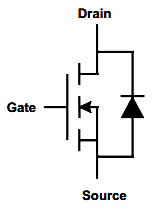For optimum performance of the machines, it is necessary to continuously monitor the parameters like speed, temperature, pressure, and vibration. Monitoring changes in any parameter could solve any downtime and/or machine damage which results in financial loss. Among these parameters one of the best operating parameter to judge dynamic conditions is vibration. In this article, we are going to talka bout the different types of vibration, the different types of vibration sensors, and how to choose a vibration sensor based on parameters.
First, we need to have a definition of vibration before we get too far into our discussion. Vibration can be defined as the mechanical oscillation about an equilibrium position of a machine or component. Or simply the back and forth motion of a machine or component. Vibration in industrial equipment is sometimes part of the normal operation but sometimes it can be a sign of trouble.
In machine monitoring we are dealing with two types of vibration; Axial (or Thrust) Vibration and Radial Vibration. “Axial” Vibration is a longitudinal shafting vibration or parallel to the shaft of a motor. For example, a shaft misalignment could cause axial vibration. “Radial” Vibration occurs as a force applied outward from the shaft. Radial vibration would occur if there is a heavy spot in the motor as it rotates. If there is a deformed fan blade, as the fan spins the deformed fan blade would pull outwardly on the shaft of the motor causing radial vibration.
Now that we know what vibration is let’s look at the different types of sensors to monitor vibration. First, we will talk about an accelerometer. Accelerometers are devices that measure the vibration, or acceleration of motion of a structure. They have a transducer that converts mechanical force caused by vibration or a change in motion into an electrical current using the piezoelectric effect. There are two types of piezoelectric accelerometers, high impedance, and low impedance. High impedance accelerometers produce an electrical charge which is connected directly to the measurement instruments. They require special accommodations and instrumentation so they are found in research facilities or high-temperature applications. Low impedance accelerometers have a charge accelerometer as its front end as well as a built-in micro-circuit and transistor that converts that charge into a low impedance voltage. This type of accelerometer easily interfaces with standard instrumentation which makes it commonly used in the industry.
Now, let’s talk about a strain gauge type of vibration sensor. Just like it sounds a strain gauge measures the strain on a machine component. A strain gauge is a sensor whose resistance varies with applied force; It converts force, pressure, tension, weight, etc, into a change in electrical resistance which can then be measured. When external forces are applied to a stationary object, stress and strain are the results. When there is a strain applied to any metallic wire the length of that wire increases and the diameter decrease. This increase in length and decrease in diameter will change the resistance of the wire which will give us our measurement of strain on our machine component.
The last type of vibration sensor we will discuss is an Eddy Current or Capacitive Displacement sensor. Eddy-Current sensors are non-contact devices that measure the position and/or change of position of a conductive component. These sensors operate with magnetic fields. The sensor has a probe which creates an alternating current at the tip of the probe. The alternating current creates small currents in the component we are monitoring called eddy currents. The sensor monitors the interaction of these two magnetic fields. As the field interaction changes the sensor will produce a voltage proportional to the change in the interaction of the two fields. When using Eddy-Current sensors it is important for the component to be at least three times larger than the sensor diameter for normal operation; otherwise, advanced calibration would be required.
When choosing a vibration sensor for your application it is important to look at factors such as; range and accuracy, environment conditions, and the shape of the measuring surface. Out of the three sensors that we have discussed the accelerometer is the most common because it has a good range of frequency, meaning it can sense slow and fast applications. Along with the frequency, accelerometers are priced affordably and are durable. They do have to be mounted directly to the machine which is common for vibration sensors. Eddy current or capacitive sensors have medium accuracy and are not optimal for high-resolution applications. They are very durable making them a good option for dirty environments. Just like the accelerometers they have to be directly mounted to the machine being monitored. Lastly, strain gauges are both versatile and accurate while still suitable for hazardous environments. Unfortunately, they can be hard to install correctly and to get proper data your application will need amplifiers which can drive up the price.
In closing, we discussed the differences in Axial and Radial vibration and their effect on machinery. We also identified three different types of vibration sensors, the accelerometer, Eddy Current or Capacitive, and strain gauge. These sensors are the most common vibration sensors but they are not the only option for your application. When determining the correct vibration sensor for your application it is important to consider the range and accuracy, environment conditions, and the shape of the measuring surface so that the sensor will perform the best in your application.






1 thought on “What is Vibration sensor?”